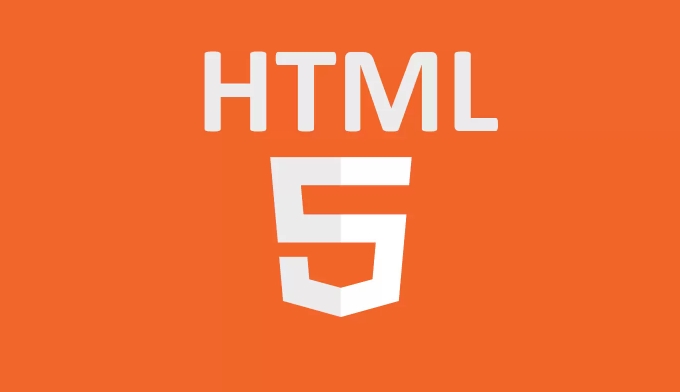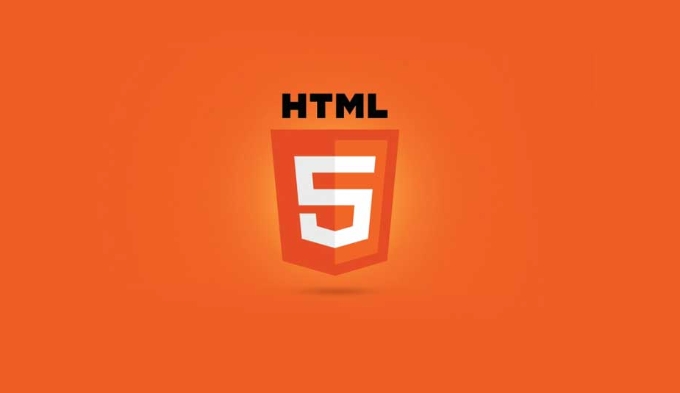The <audio> tag of HTML5 is the easiest way to add background music or audio to a web page. Its basic writing is: <audio src="your-audio-file.mp3" controls></audio>, where the controls property is used to display the playback control. 1. Supported formats include MP3, WAV, OGG, AAC and FLAC, but the compatibility of each browser is different. MP3 is supported in Chrome, Edge, Safari and the new version of Firefox. WAV is universally used on all platforms. OGG is supported by Firefox and Chrome. AAC is mainly available on Safari and iOS. FLAC is only partially supported; 2. When using it, you need to pay attention to automatic playback restrictions, cross-domain issues, file path errors and server MIME type configuration; 3. It is recommended to provide multiple formats of source files to enhance compatibility, such as including MP3 and OGG at the same time; 4. Playback behavior can be controlled through JavaScript, such as clicking the button to play audio.

The easiest way to play background music or audio on a web page is to use the HTML5 <audio></audio> tag. It does not require plug-ins, and mainstream browsers also support it, but many people find that the audio cannot be played after using it. In fact, most of the problems lie in the format.

Basic writing method: how to add an audio
The <audio></audio> element of HTML5 is very direct to use, with a basic structure like this:

<audio src="your-audio-file.mp3" controls></audio>
After adding the controls attribute, the browser will come with controls such as play, pause, and progress bar. You can also control the playback behavior through JavaScript, such as automatic playback, mute, and loop functions.
What formats are supported? Not all formats can be used
Although <audio> is very convenient, the format it supports is not unified and different browsers are different. Several common formats are MP3, WAV, OGG, AAC, and FLAC, but not all browsers are compatible with these.

Generally speaking:
- MP3 : Chrome, Edge, Safari are all supported, and Firefox is also supported (newer version).
- WAV : Universal on the entire platform, lossless sound quality, but large files.
- OGG / Vorbis : Firefox and Chrome support, Safari also supports it, but not as common as MP3.
- AAC / M4A : mainly performs well on Safari and iOS.
- FLAC : Some browsers support, such as Chrome and Firefox, but are not recommended as the only format.
Therefore, for compatibility, it is generally recommended to provide multiple formats of source files so that the browser can choose to play:
<audio controls> <source src="audio.mp3" type="audio/mpeg"> <source src="audio.ogg" type="audio/ogg"> Your browser does not support audio playback. </audio>
A few points to pay attention to in actual use
Sometimes even if the format is correct, it still cannot be played. Common reasons include:
- Automatic playback restrictions : Most browsers require users to interact with the page first (such as clicking) before they can automatically play audio, especially those with sound.
- Cross-domain issue : If the audio file comes from another domain name, the server needs to set CORS permissions correctly.
- File path error : The src address is written incorrectly, which is the most common low-level error. Check whether the path is correct.
- The server MIME type configuration is incorrect : Some servers do not configure the correct MIME type, which will cause some formats to fail to load.
For example, if you want to click the button to start playing, you can write it in JS like this:
const audio = document.querySelector('audio');
document.querySelector('#play-btn').addEventListener('click', () => {
audio.play();
});Which format is the most convenient way to choose?
If you only want to put one format, MP3 is the best choice for compatibility at present , especially considering the support of mainstream browsers on both mobile and desktop. However, if the target user uses Firefox or other open source browsers more often, you can consider providing the OGG version at the same time.
In short, don't rely on only one format. Prepare more sources for <audio></audio> to cover more devices and browsers. Basically that's it.
The above is the detailed content of HTML5 audio element and supported formats. For more information, please follow other related articles on the PHP Chinese website!

Hot AI Tools

Undress AI Tool
Undress images for free

Undresser.AI Undress
AI-powered app for creating realistic nude photos

AI Clothes Remover
Online AI tool for removing clothes from photos.

Clothoff.io
AI clothes remover

Video Face Swap
Swap faces in any video effortlessly with our completely free AI face swap tool!

Hot Article

Hot Tools

Notepad++7.3.1
Easy-to-use and free code editor

SublimeText3 Chinese version
Chinese version, very easy to use

Zend Studio 13.0.1
Powerful PHP integrated development environment

Dreamweaver CS6
Visual web development tools

SublimeText3 Mac version
God-level code editing software (SublimeText3)

Hot Topics
 Audio and Video: HTML5 VS Youtube Embedding
Jun 19, 2025 am 12:51 AM
Audio and Video: HTML5 VS Youtube Embedding
Jun 19, 2025 am 12:51 AM
HTML5isbetterforcontrolandcustomization,whileYouTubeisbetterforeaseandperformance.1)HTML5allowsfortailoreduserexperiencesbutrequiresmanagingcodecsandcompatibility.2)YouTubeofferssimpleembeddingwithoptimizedperformancebutlimitscontroloverappearanceand
 What is the purpose of the input type='range'?
Jun 23, 2025 am 12:17 AM
What is the purpose of the input type='range'?
Jun 23, 2025 am 12:17 AM
inputtype="range" is used to create a slider control, allowing the user to select a value from a predefined range. 1. It is mainly suitable for scenes where values ??need to be selected intuitively, such as adjusting volume, brightness or scoring systems; 2. The basic structure includes min, max and step attributes, which set the minimum value, maximum value and step size respectively; 3. This value can be obtained and used in real time through JavaScript to improve the interactive experience; 4. It is recommended to display the current value and pay attention to accessibility and browser compatibility issues when using it.
 Adding drag and drop functionality using the HTML5 Drag and Drop API.
Jul 05, 2025 am 02:43 AM
Adding drag and drop functionality using the HTML5 Drag and Drop API.
Jul 05, 2025 am 02:43 AM
The way to add drag and drop functionality to a web page is to use HTML5's DragandDrop API, which is natively supported without additional libraries. The specific steps are as follows: 1. Set the element draggable="true" to enable drag; 2. Listen to dragstart, dragover, drop and dragend events; 3. Set data in dragstart, block default behavior in dragover, and handle logic in drop. In addition, element movement can be achieved through appendChild and file upload can be achieved through e.dataTransfer.files. Note: preventDefault must be called
 How can you animate an SVG with CSS?
Jun 30, 2025 am 02:06 AM
How can you animate an SVG with CSS?
Jun 30, 2025 am 02:06 AM
AnimatingSVGwithCSSispossibleusingkeyframesforbasicanimationsandtransitionsforinteractiveeffects.1.Use@keyframestodefineanimationstagesforpropertieslikescale,opacity,andcolor.2.ApplytheanimationtoSVGelementssuchas,,orviaCSSclasses.3.Forhoverorstate-b
 HTML audio and video: Examples
Jun 19, 2025 am 12:54 AM
HTML audio and video: Examples
Jun 19, 2025 am 12:54 AM
Audio and video elements in HTML can improve the dynamics and user experience of web pages. 1. Embed audio files using elements and realize automatic and loop playback of background music through autoplay and loop properties. 2. Use elements to embed video files, set width and height and controls properties, and provide multiple formats to ensure browser compatibility.
 What is WebRTC and what are its main use cases?
Jun 24, 2025 am 12:47 AM
What is WebRTC and what are its main use cases?
Jun 24, 2025 am 12:47 AM
WebRTC is a free, open source technology that supports real-time communication between browsers and devices. It realizes audio and video capture, encoding and point-to-point transmission through built-in API, without plug-ins. Its working principle includes: 1. The browser captures audio and video input; 2. The data is encoded and transmitted directly to another browser through a security protocol; 3. The signaling server assists in the initial connection but does not participate in media transmission; 4. The connection is established to achieve low-latency direct communication. The main application scenarios are: 1. Video conferencing (such as GoogleMeet, Jitsi); 2. Customer service voice/video chat; 3. Online games and collaborative applications; 4. IoT and real-time monitoring. Its advantages are cross-platform compatibility, no download required, default encryption and low latency, suitable for point-to-point communication
 How to create animations on a canvas using requestAnimationFrame()?
Jun 22, 2025 am 12:52 AM
How to create animations on a canvas using requestAnimationFrame()?
Jun 22, 2025 am 12:52 AM
The key to using requestAnimationFrame() to achieve smooth animation on HTMLCanvas is to understand its operating mechanism and cooperate with Canvas' drawing process. 1. requestAnimationFrame() is an API designed for animation by the browser. It can be synchronized with the screen refresh rate, avoid lag or tear, and is more efficient than setTimeout or setInterval; 2. The animation infrastructure includes preparing canvas elements, obtaining context, and defining the main loop function animate(), where the canvas is cleared and the next frame is requested for continuous redrawing; 3. To achieve dynamic effects, state variables, such as the coordinates of small balls, are updated in each frame, thereby forming
 How to check if a browser can play a specific video format?
Jun 28, 2025 am 02:06 AM
How to check if a browser can play a specific video format?
Jun 28, 2025 am 02:06 AM
To confirm whether the browser can play a specific video format, you can follow the following steps: 1. Check the browser's official documents or CanIuse website to understand the supported formats, such as Chrome supports MP4, WebM, etc., Safari mainly supports MP4; 2. Use HTML5 tag local test to load the video file to see if it can play normally; 3. Upload files with online tools such as VideoJSTechInsights or BrowserStackLive for cross-platform detection. When testing, you need to pay attention to the impact of the encoded version, and you cannot rely solely on the file suffix name to judge compatibility.






